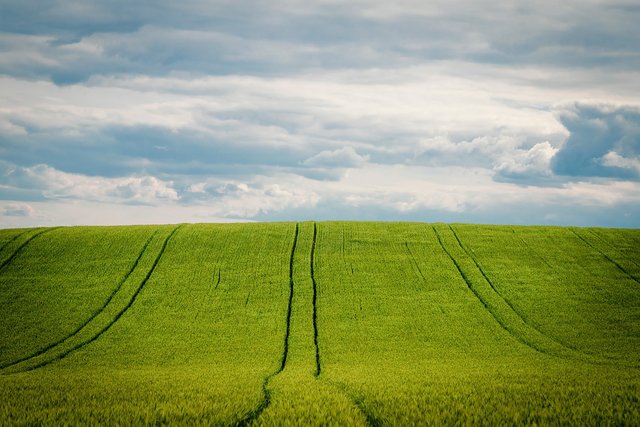Basics of Agriculture

An Insight into What Agriculture is and Why it Matters.
Agriculture is the scientific practice of growing crops and raising livestock for human consumption, fibre, medicine and other end-products. It one of the oldest activities known to man and is the basis of most societies and economies of the world today. Farm is not the only aspect of agriculture, but other activities such as horticulture, livestock farming, fish farming, and trees, crops farming as well.
Importance of Agriculture:
1. Food Supply:
Arising from this fact Agriculture plays a vital role of producing food on the society since it is important for survival. If agriculture wasn’t a thing then large scale production of food cannot happen, and thus there is starvation and insecurity.

2. Economic Backbone:
Most of the developing nations have their agriculture contributing to the GDP and also hiring thousands of their inhabitants. Here in the developed economies themselves, agriculture influences associated sectors including the food processing and packaging and the arm that delivers these products.
3. Raw Material Provider:
Numerous sectors such like textiles (cotton, wool), energy (bio fuels), chemical, pharma depends immensely on agricultural products.
4. Cultural Significance:
An appeal of agriculture is tuned with cultural practices and beliefs especially in rural cultures whose activities are pegged on sowing and harvesting seasons.
5. Environmental Role:
Organic farming impacts ecosystems conservation, soil health, and carbon stock with a critical role in mitigation of climate change.
Some of the main agricultural practices being applied today worldwide

1. Subsistence Agriculture:
This is practiced locally by farmers to feed their families only. Simple equipment and techniques are used, mostly hand operated, and there is often little or no surplus to trade. It found in the rural areas of Africa, Asia, and Latin America it involves activities such as swidden culti-vation and pastoralism.
2. Commercial Agriculture:
This type centres itself on the mass production of crops and animals for commercial sale in local and international markets. For instance, wheat producers in USA and sugarcane growers in Brazil. It is common in the developed and some developing countries of the world.
3. Industrial Agriculture:
Very capitalized and dependent on the technological tools, industrial agriculture reflects the goal of obtaining as much production volume as possible without taking into account the effects of synthetically produced fertilities and pesticides as well as GMO crops. This is so in consummate economies such as the United States, China, and Brazil.
4. Organic Agriculture:
SHARES chemical input and practices natural procedures and ecosystem delicateness. It is popular globally, especially in the European Union and North America as the buyers become wiser on the need for environmentally friendly products.
5. Mixed Farming:
This ensures the social economic transformation of the farm through integration of crop production services and animal production services. It is found in Europe, in some part of Asia and also in Australia.

Major crops cultivated in the world and it’s uses
1. Wheat:
By loaves or by strands, wheat is part of bread, pasta, and cereal in the diet of billions of people.
It is cultivated in countries such as china, India and United States of America.
2. Rice:
A food that can not be done without by more than half of the world population.Rice is a staple food predominant in Asia. This one is produced in China, India, and Indonesia.
3. Corn (Maize):
As food crop, animal feed use and bio ethanol, corn is grown in the United States, Brazil, and Mexico.
4. Soybeans:
Of them, the oil and fat food used in meals, tofu, biodiesel is produced from this crop and it is cultivated in the US, Brazil & Argentina.
5. Cotton:
An important source of fabrics known as cotton it is grown in India, China and United States of America.
6. Sugarcane:
Also used in producing sugar and ethanol it is grown in Brazil, India and china.
7. Potatoes:
One of the world’s most adaptable crops for both, edible and nonedible applications, that is cultivated in China, India, and Russia.
8. Coffee and Tea:
These products are closely associated with international commerce; coffee being grown mainly in Brazil and tea in India and China.
Food production has various dimensions: it is about feeding people, building up economy, creating identity and maintaining the nature. It ties people to the earth and delivers the inputs essential for existence and human interaction.
Mentions
@neelofar
@huraira50
@abdullahw2
Welcome to steem-agro!
MODs Comment/Recommendation:
Thank you for sharing your thoughts, dear brother. I appreciate your excellent article; it adds great value to our discussions. I encourage you to engage with other community members, as your participation can lead to meaningful conversations. If you find posts that resonate with you, please support them with an upvote. Your engagement matters. Wishing you all the best as you continue to contribute to our community.
Remember to always share your post on Twitter using these 3 main tags #steem #steemit $steem
